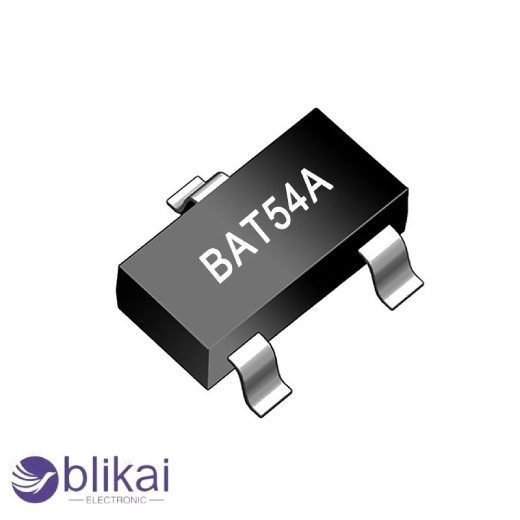
Transistor_Series_Voltage_Regulators
What are Transistor Series Voltage Regulators?
Transistor series voltage regulators are a popular type of linear voltage regulator that uses transistors to maintain a stable output voltage. The transistor in these regulators is connected in series with the load. Additionally, the transistor’s functioning is managed to keep the output voltage steady. Transistors function as changeable resistors. The resistance is adjusted based on the discrepancy between the expected and actual output voltages. This modification is controlled by a feedback system. An error amplifier and a reference voltage are typically included in this. Transistor series regulators are widely used due to their ease of use and effectiveness in delivering a consistent voltage. This qualifies it for uses where the requirement for clean and consistent output outweighs the necessity for energy efficiency.
Explanation of the Basic Working Principle
Transistors are used in transistor series voltage regulators to control the voltage drop between the input and output terminals. This is the fundamental concept of operation. In the active region, the transistor functions. It functions as a variable resistor, varying its resistance to keep the output voltage steady. To compare the output voltage and any disparity, a reference voltage is utilized. By altering the transistor’s resistance, the difference between the actual output voltage and the reference voltage can be adjusted. The output voltage is kept constant by this feedback circuit. Transistor series voltage regulators are a common option in many applications due to their mechanism’s simplicity and dependability.
Role of the Transistor in Regulating Voltage
A voltage regulator in series with a transistor Voltage stabilization relies heavily on transistors. Typically, they are arranged in sequence with the load. This implies that the transistor must be the path for all current entering the load. The transistor’s capacity to dynamically modify its resistance enables it to regulate the voltage drop across itself. Controllable output voltage is therefore possible. The transistor increases its resistance to maintain a consistent output voltage when the load falls or the input voltage increases. The resistance of the transistor will drop. This dynamic adjustment is managed by a feedback loop that continuously monitors the output voltage and makes real-time corrections, ensuring consistent performance.
Comparison with Other Types of Voltage Regulators
Transistor series voltage regulators offer several advantages and disadvantages compared to other types of voltage regulators. This is not the same as a switch regulator, which regulates voltage using a high frequency switching device. The output of the transistor series regulator is noise-free and smooth. They are therefore appropriate for use in precise analog circuitry. Transistors, on the other hand, are typically less efficient than switch regulators since they release surplus power as heat. particularly when the input and output voltages differ significantly. A shunt regulator, which eliminates surplus current from the load, is comparable to this. In general, series controllers are more efficient and have the capacity to supply a greater current to the load. Every kind of voltage regulator has benefits of its own. The decision is based on the particular requirements of the application, including the required level of complexity, noise tolerance, and performance.
Factors Affecting Circuit Stability
Electronic circuit instability can be caused by a variety of circumstances. The most frequent variables are variations in load and fluctuations in input voltage. Variations in the external environment or the power supply might cause fluctuations in the input voltage. The voltage applied to the circuit varies as a result. The components may function outside their optimal range as a result of these variations. Failure or a decline in performance follows from this. Because load fluctuation alters the amount of current drawn from the load, it can also have an impact on the circuit’s stability. Variations in load that occur suddenly might result in dips or spikes in voltage. Components are stressed by this, which may result in unstable operation. Furthermore, alterations in temperature, component deterioration, and electromagnetic interference can all exacerbate instability.
How Transistor Series Voltage Regulators Mitigate Instability
Transistor series voltage regulators are essential for mitigating instability in electronic circuits. They utilize a combination of feedback mechanisms, output voltage regulation, and dynamic compensation to maintain a steady output voltage. It can adjust to shifting situations thanks to these qualities. This guarantees that electronic devices will operate dependably. by keeping an eye on and modifying the output voltage continuously. Series transistorized regulators offer protection against load variations and voltage swings.
1. Feedback Mechanisms
Feedback mechanisms are fundamental to the operation of transistor series voltage regulators. They entail keeping an eye on the output voltage and comparing it to a reference value on a constant basis. An error signal is produced when there is a difference between the intended reference voltage and the actual output voltage. used to modify the transistor’s resistance. Deviations are adjusted dynamically using this. through maintaining a steady output voltage. In real time, the feedback loop is in operation. It enables fast compensation for small variations in input voltage or load circumstances. The controller’s capacity to maintain a steady voltage depends on this mechanism. The circuit’s overall stability is enhanced by this.
2. Regulation of Output Voltage
Controlling the output voltage up to a predetermined point is the primary duty of the transistor voltage regulator. The transistor’s capacity to adjust its resistance in response to feedback from the output voltage allows for this regulation. The transistor modifies the resistance to bring the output voltage back to the set point when it deviates from the intended value. It is essential for the stability of electronic circuits to precisely manage the output voltage. because regardless of changes in the load or input voltage, the components must get a constant voltage. The Transistor series regulator increases the overall system’s stability and safeguards delicate components by ensuring a steady voltage.
3. Compensation for Variations in Load and Input Voltage
Voltage regulators in the transistor series are made to adjust for variations in input and load voltage. This is a typical reason why electronic circuits become unstable. When components are turned on or off, for example, the current demand from a circuit varies, causing load variation. Alterations in the power source or outside factors may be the cause of fluctuations in the input voltage. The transistor resistance is dynamically adjusted by the regulator to offset these variations. By doing this, the output voltage is guaranteed to stay consistent. Applications where the power supply or load circumstances are unpredictable may benefit greatly from this feature. By effectively managing these variations, transistor series regulators help to maintain a stable and reliable operation of electronic devices.




